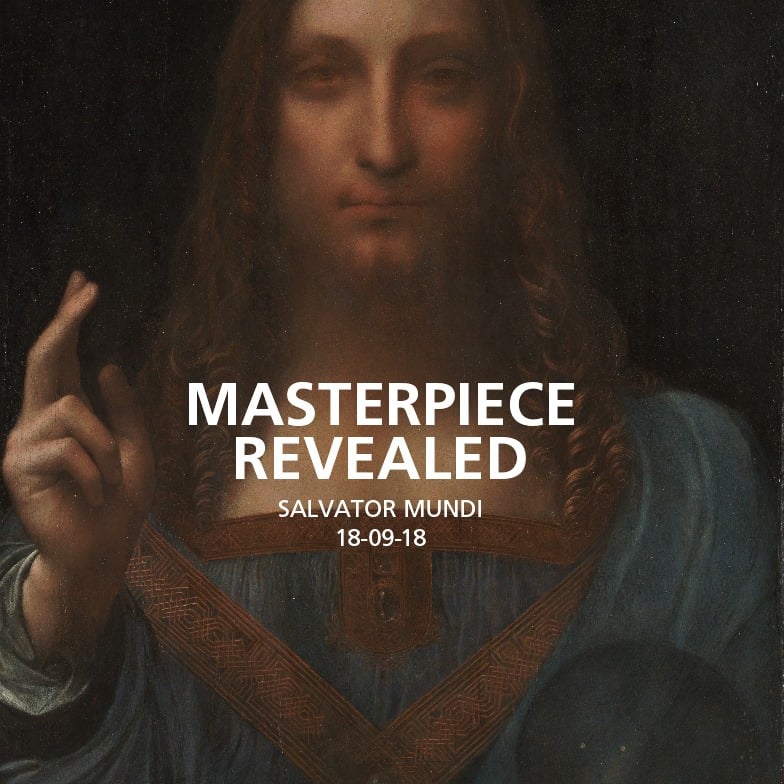Art World
Masterpiece in the Middle East: Da Vinci’s ‘Salvator Mundi’ Will Debut at the Louvre Abu Dhabi This Fall
The $450-million painting's debut promises to show off the "inclusive nature of Louvre Abu Dhabi’s narrative."

The $450-million painting's debut promises to show off the "inclusive nature of Louvre Abu Dhabi’s narrative."

Naomi Rea

It’s official. Leonardo da Vinci’s Salvator Mundi, the enigmatic Christ painting which sold at Christie’s New York for an epic $450 million last November, will go on show at the Louvre Abu Dhabi mega-museum from September 18 this year, the museum has confirmed.
Confusion still surrounds the record-busting purchase. The New York Times reported it was purchased by the Saudi prince as a gift, while the UAE has claimed that its own Department of Culture and Tourism bought it through a proxy buyer. In March, the Daily Mail even had the outrageous yarn that Saudi and Emirati buyers accidentally bid against one another, with Saudi crown prince Mohammed Bin Salman ultimately swapping it to Abu Dhabi for a yacht.
In any case, now the 83-day countdown until it is officially unveiled begins. When it arrives, it will be incorporated as a centerpiece of the UAE institution’s collection. “Within Louvre Abu Dhabi’s chronological universal narrative, the artwork will be placed at its relevant point in history, where the museum explores the modern era,” a spokesperson for the museum told artnet News.
“This is a very important and exciting moment for Abu Dhabi as we witness a masterpiece by one of the most important artists in history coming to our city,” Mohammed Khalifa Al Mubarak, chairman of Abu Dhabi’s Department of Culture and Tourism told local English-language paper The National. “Salvator Mundi highlights the inclusive nature of Louvre Abu Dhabi’s narrative and Abu Dhabi’s mission to promote a message of acceptance, and openness.”
The rediscovery of Leonardo da Vinci’s Salvator Mundi is one of the most significant art findings in history. Coming to @louvreabudhabi on Sep 18.
Find out more: https://t.co/KHnU26XpZU #SeeSalvatorMundi pic.twitter.com/8nOQHH65Vc
— Department of Culture and Tourism – Abu Dhabi (@dctabudhabi) June 27, 2018
“Having spent so long undiscovered, this masterpiece is now our gift to the world and we look forward to welcoming people from near and far to witness its beauty,” Al Mubarak continued.
The 500-year-old painting was considered a “lost” Leonardo until extensive restoration on the work peeled away layers of overpainting that had lead experts to believe that it was a copy of the original. The mysterious painting is thought to be one of the few surviving works attributed the Renaissance master (there’s general consensus on around 20 other existing works).
Salvator Mundi will be the second Leonardo to be shown at the museum. It is currently displaying the Renaissance great’s portrait of an unknown woman, La Belle Ferronniere (1490), which it has borrowed from its French sister museum. The unknown woman is due to wend its way back to Paris in November, just as the Salvator Mundi arrives.
“We believe it will be an amazing opportunity for Abu Dhabi’s residents and visitors from around the world to engage with a rare and iconic work of great cultural significance,” the spokesperson told artnet News.
Following the inaugural display of the painting in the United Arab Emirates, it will travel to the Louvre in Paris for a sure-to-be blockbuster Leonardo show celebrating 500 years since the death of the Italian painter, according to the spokesperson. The French exhibition will run from October 24, 2019 through February 24, 2020. It will be the first time the Emirati museum has loaned a work to the Paris institution, which has already loaned hundreds of works to Abu Dhabi as part of a 30-year intergovernmental commitment signed in 2007.
The extraordinary press around the star painting is welcome to both the Louvre and the Saadiyat Island museum complex where it is sited, which has otherwise been dogged by concerns about worker rights abuses in its construction (a branch of the Guggenheim museum remains under construction). Following the Paris show, Salvator Mundi will return to Abu Dhabi for the long haul.